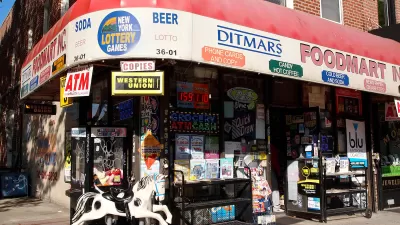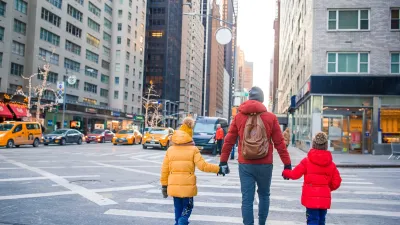Preliminary results from a new study suggest that Americans are willing to pay about $850 more per Walk Score point when purchasing a home.
Emily Washington and Eli Dourado, the researchers behind the project, used revealed preference theory to uncover the extent to which walkability can inform a homebuyer’s choices. Walkable homes come with a higher price tag, Washington writes, because they are in relatively scarce supply. It follows that developers avoid building walkable housing not for financial reasons, but because of certain external regulations.
Washington says that research indicating Americans prefer single-family homes because there are more of them is built upon a false set of assumptions. “[L]ooking at the housing choices that Americans make while ignoring both regulations that limit the potential choice set and without considering the prices consumers pay is misleading, like saying Americans prefer Fords to BMWs because there are more of them on the road,” she explains.
FULL STORY: The Value of Walkability

Study: Maui’s Plan to Convert Vacation Rentals to Long-Term Housing Could Cause Nearly $1 Billion Economic Loss
The plan would reduce visitor accommodation by 25,% resulting in 1,900 jobs lost.

North Texas Transit Leaders Tout Benefits of TOD for Growing Region
At a summit focused on transit-oriented development, policymakers discussed how North Texas’ expanded light rail system can serve as a tool for economic growth.

Why Should We Subsidize Public Transportation?
Many public transit agencies face financial stress due to rising costs, declining fare revenue, and declining subsidies. Transit advocates must provide a strong business case for increasing public transit funding.

How to Make US Trains Faster
Changes to boarding platforms and a switch to electric trains could improve U.S. passenger rail service without the added cost of high-speed rail.

Columbia’s Revitalized ‘Loop’ Is a Hub for Local Entrepreneurs
A focus on small businesses is helping a commercial corridor in Columbia, Missouri thrive.

Invasive Insect Threatens Minnesota’s Ash Forests
The Emerald Ash Borer is a rapidly spreading invasive pest threatening Minnesota’s ash trees, and homeowners are encouraged to plant diverse replacement species, avoid moving ash firewood, and monitor for signs of infestation.
Urban Design for Planners 1: Software Tools
This six-course series explores essential urban design concepts using open source software and equips planners with the tools they need to participate fully in the urban design process.
Planning for Universal Design
Learn the tools for implementing Universal Design in planning regulations.
City of Santa Clarita
Ascent Environmental
Institute for Housing and Urban Development Studies (IHS)
City of Grandview
Harvard GSD Executive Education
Toledo-Lucas County Plan Commissions
Salt Lake City
NYU Wagner Graduate School of Public Service





























